#holmes basic
Text

Fighter, magic-user, and cleric battle a purple worm in the depths of the dungeon. (David Sutherland, a little scene found in the first and second editions of Holmes' Dungeons & Dragons Basic Set rules, TSR, 1977-78) An equivalent party of 3 faces the orc horde on the title page. The purple worm fight is similar but reversed compared to Sutherland's illustration in the 1977 AD&D Monster Manual.
#Dungeons & Dragons#D&D#David Sutherland#purple worm#dungeon#dnd#adventuring party#monster#Holmes D&D#Basic D&D#Holmes Basic#fighter#magic user#cleric#wizard#mage#magic spell#Dungeons and Dragons#TSR
168 notes
·
View notes
Text
Pre-G1 Modules, part 5 - The Tower of Zenopus
So you probably noticed that this is being posted after G1. Sorry! File this in July 1977, so just after DK1 and 2 and Tsojconth and City-State and Tegel Manor but before Thieves of Badabaskor et c.
This post being released out of order is a function of where Zenopus is hiding. You see, the dating of Holmes Basic is a little squirrely. Most places say 1977 broadly, some people will say "the earliest reference is an ad in Dungeon in September '77", and a few internet sleuths say July 11th . So I hadn't had that down in my to-review list before I released G1, and in the rush I had forgotten that hiding in the back of Holmes Basic is the beloved little module simply entitled "Sample Dungeon", later known as The Tower of Zenopus.
And, consequently, I have no fancy cover to show you! Just this hand-drawn little map:

The Tower is unique in that it is the first module on this list that I have actually run for a real party. Now, granted, I did not run the Tower in Holmes Basic (I ran it in Fantasy AGE 2nd edition), but nonetheless -- it's the first one I have personal knowledge of. And I love it quite a bit.
So historywise Holmes Basic has a lot going on that I cannot quickly explain, so simply accept that Eric Holmes offered and was eventually hired to re-edit Original Dungeons and Dragons ("Little Brown Booklets") into a less labyrinthine mess. This was an extremely good call, and the Basic productline would go on to live for a very very long time in one form or another, only getting seriously changed much later by Frank Mentzer in 1983. There is a lot of Corporate Politics wrapped up in the release of ADND vs Basic vs Original DND, with concerns about copyrights and royalties and extremely Type A Gary Gygax not wanting to share his toys with the others. And, done.
The Tower is interesting from a historical standpoint in that whereas The Tower of the Frog is "here is a dungeon, here is what that looks like", Tower of Zenopus is "here is how to make a dungeon, and this is a dungeon that will teach players how to play". There will be far better attempts at those two goals, but nonetheless Tower represents a module that genuinely holds up in 2024 with some cleanup. It was given a loving nod in 5e's Ghosts of Saltmarsh by having the neighboring Portown be a little up the coast from Saltmarsh and I strongly recommend having that be your second adventure after the haunted house.
So, what's Tower's backstory? Both more and less than you'd expect. Zenopus built the tower next to the graveyard, it was suddenly engulfed in green flame, Zenopus was killed "by some powerful force he had unleashe din the depths of the tower", and it sat around for a bit. The villagers saw spooky shit going on there and smashed it with a catapult. Your party has assembled in the Green Dragon Inn and is going to investigate for phat lewt. Go on, scamp!
The structure of the tower is unusually genius for an early module, in that it features a lot of routing loops that allow for nonlinear but clear movement through the dungeon. The overall structure is, ultimately, a rimmed wheel, an outer ring connected by spokes to the hub. The shape hides this well but not too well, which is perfect for the new DM. So here's the room by room highlights:
The party enters on a four-way intersection, each taking you to a different feature of the dungeon. I have heard this dungeon describes as "like a theme park with four wings" and that's an apt descriptor here -- you're picking between the rat area, the pirates area, the wizard area, and the tomb area.
A very cute and simple puzzle, which is one of those most precious things in life: a four-way room freely opens from the outside, but only lets you out from one door. A statue in the center points towards the door that is currently open, and the statue can be spun to change the door. It's a neat little trick in that if the party gets separated during combat, anyone in this room can't assist anymore unless they work out the trap, but outside of combat it is largely a non-issue so long as they take the time to puzzle it out.
A pretty standard but new for the time tell that the wizard has a petrification wand with a little garden of stony adventurers. It's a classic for a reason.
A regulation water-rush trap that separates the party with the current -- again, a certified classic, creating tension by making fair encounters that are hard if the players get separated by traps
Ye olde "question answering mask" with, again, a precious simple puzzle: a tiny little riddle. If you parse out that the mask is powered by the sundial, you can abuse your light sources to make it be 4pm.
G i a n t c r a b, the most classic of scary "normal monsters", because it is armored and hits hard but people still immediately understand "oh fuck it's a crab" in the way they understand a bear is a serious issue
Giant spiders ambush from the ceiling silently. Zenopus really is a classics fest, but in 2024 that's kind of novel simply because THIS type of classic isn't done anymore.
For reasons I cannot fathom, the local pirates have taken to smuggling in the Tower because it's connected to the sea. This works in Ghosts because Portown is abandoned and so it's far away, but as-mentioned in the original module the tower has to be suuuuper far away from town, but also near enough to be the graveyard, for it to be a good smuggler's den. Regardless, there's a canned setpiece in the sea access room where pirates are coming on boats with a kidnapped noble lady from Portown. They're moving in on skiffs when, a giant octopus attacks! It's very, very good. This is, for my money, the best room in the dungeon and also one of the best moments in DND until we get all the way to N1's tavern.
In the center of the dungeon is a staircase leading up into the remains of the tower -- I made a rather major change from the original here, the original is merely an old alchemist's laboratory complete with a pet ape.

Instead of the alchemy lab, for my adventure I made a rather large change: the original module suggests expanding downwards because That Is How It Was Done in 1974. Instead, I went up. The horrible thing Zenopus discovered had formed a shadowy parallel dimension, so they were in a pocket dimension where the old tower was, even though in the prime material plane it was simply rubble. This blog is not About My Modifications but, that's my free tip about the tower if you ever run it -- subvert the old timey expectations by making it an upward dungeon instead of a downward dungeon, with the power of weird magic.
Anyway, that was all, and amends are now made for my previous error. See you in checks notes like 5 hours with G2!
2 notes
·
View notes
Text
All the World’s Monsters Readthrough
The following has not been proofread. It may contain typos, I may use the same words or phrases too many times, and so on. Tumblr also removes a lot of formatting such as underlines. Maybe I'll fix or update it in the future; maybe I won't. (Things like underlining being removed is beyond my control.) If there are serious corrections as regards facts presented, I will definitely amend such points. Please feel free to comment such corrections; or any comments at all. I want to read through with all of you!
All the World’s Monsters:
A Readthrough, Part I
Longwinded Introduction
This is a feature I’ve been wanting to work on for quite some time. Originally I wanted to write it with another person, and had various ideas on how that would work, but that didn’t happen. It’s a readthrough of the world’s first monster collection for an RPG. That I’m aware of, anyway - there very well might be some obscure or unsung prior volumes on the same topic(at the very least, perhaps zine monster collections?). I’m talking about Chaosium’s All the World’s Monsters. It’s an interesting book for sure, in a number of ways.
For one thing, not so much had become standardized. What information was important to know about a monster might vary by personal taste or by the specific version of the game being played. All the World’s Monsters was released after Holmes Basic but before the AD&D Monster Manual, which was the first of the AD&D books to be released(because I guess they figured people could still use the monster stats with other versions of the game while they completed the other core books).
Holmes Basic, for those unaware(and I won’t go into it too far because you can find plenty of histories on this out there with all the detail you’d like - skip this paragraph if you know about this already), was created as a way of introducing people to the D&D game as presented in the original white box set and Supplement I: Greyhawk. It was also a way of teaching people how to put those pieces together, or at least, one of the ways to do it, since the white box game was sort of all over the place, and difficult for people to grasp - especially if they had no prior boardgame knowledge beyond Monopoly and no wargaming knowledge. It kind of assumed you knew a lot of terms of general procedures for the more advanced board games and such, and that you would otherwise fill in the blanks. Holmes Basic did that for you. Furthermore, and it’s my understanding that this was more of a “Gygax shoehorning stuff he wanted in” aspect, but there are a few references to AD&D concepts and even the game itself, such as the exhortation to purchase AD&D if you wished to know how to have exotic characters like halfling thieves, or progress beyond 3rd level. (With the OD&D books you could do that anyway, and this was just a sales pitch.) It also introduced something closer to AD&D’s alignment system, except that you couldn’t play any neutral character besides a true neutral one: no neutral good, no chaotic neutral(there goes half my players!).
There’s a lot to say about this version of the game, and some people play this one exclusively, even coming up with retroclones such as Blueholme! And some of what I have to say on it will be relevant, because All the World’s Monsters was written with the assumption that Holmes Basic reflected the standard we would be seeing from that point on, including little oddities never to appear in any other edition or version of D&D ever again!
Another thing that makes the book so intriguing is, being the first of its kind, there were so many monsters out there that hadn’t been statted yet - at least in a published book that others could look at and draw inspiration from. So until they got statted in AD&D’s Deities and Demigods, who could argue, “officially,” how many hit dice a shoggoth should have, what its AC should be, and so on? The original books gave no stats for any kind of sphinx - what would an androsphinx’s HD be? Same as a lion? More? What’s a lion’s HD anyway? Spotted lions are listed in the OD&D encounter tables, but there are no statistics for them(in the white box set, anyway). Or how about an elephant - how many HD should it have? What should its AC be? While the white box told us that rocs are sometimes large enough to prey on elephants(an incredible concept rendered rather banal now by overuse), it didn’t tell us what statistics an elephant should have. How would you stat it, without peeking at your MM? Guess, what would you give them? Highlight the following for the answer:
Tumblr won't allow me to set text to white because why would it? I'm leaving the "highlight the following line" bit out of stubborness at not allowing the formatting I require.
(11 HD, AC 6)
So at that time, there were a myriad animals and monsters that had never before seen print in the form of D&D/AD&D statistics. This gives a lot of room for creativity - you couldn’t look at some other book and say “Gee, I gave this monster 9 HD, but the official ones are 4/this unofficial supplement gives them 5. Did I overrate them that badly?” Maybe so, maybe not.
Statting animals and monsters is more art than science, though there’s some of that, too. The fact is, these are fairly arbitrary measures, and if you attempt to work out the official stats and come up with some kind of formula, you’ll drive yourself insane. Many things in the game, admittedly, were varied for the sake of variation. Weapon damage, for instance, was stated to have been made up for the purpose of variety - there’s no real reason that one weapon causes 2d4 while another causes 1d8 other than providing a wide spread of different dice types and combinations for weapons. (Yes, 2d4 gives you a bell curve with average score of 5 and a minimum score of 2, but the reason for this wasn’t because the weapon itself logically should, but rather to provide a variation.) I suspect that wolves being described as far smaller than they actually are was for a similar reason - wanting lower-level characters to be able to fight creatures that low-level monsters(goblins) often ride, but also to offer dire wolves, wargs, etc as upgrades. (Which still could have been done with properly-sized wolves, so maybe I’m barking up the wrong tree…)
Not only were so many animals and monsters unstatted, but again - formatting, and even rules weren’t fully codified or formulated yet. To some degree, many wouldn’t be until 3e made a concentrated effort to make everything formulaic with very specific processes and rules for everything, as well as to “balance” every monster and class, a task monumentally failed. As a good example of the lack of cohesion, look up monsters that strangle or drown and see how many different ways it’s done. I’m not saying this to knock the “old way” - there’s a reason I play old versions of D&D almost exclusively. Restricting yourself with unnecessary formulas and intricate templates is not typically of benefit, and having the flexibility to model things in different ways is superior to having to consult a list of codified formulas to make sure everything adds up.
But at this stage, even some of the few things that became standards had yet to come into play. In most instances, there were no examples to follow to determine, say, how almost any given special ability a creature might have should be modeled. So even this had to be determined by what were essentially fans writing for their favorite game.
As you can see, this was an exciting time, and an incredible opportunity - to set in black & white, in numbers, all the different things that D&D/AD&D classifies as “monsters” - anything that isn’t a PC! Setting down on paper, for the first time, so many different monsters. Devising rules for powers and abilities that nobody had created(at least publically available) rules for. Incorporating rules that would only exist for one basic introductory iteration of the system. (Not that they knew that!) Having the chance to determine formatting and all kinds of things that nobody had yet done.
Worlds and cosmoses full of things that still needed to be expressed in numbers and ability descriptions were waiting to be codified. This was, in fact, one of my misconceptions about the book when I purchased it - I thought it was more like Monsters of Myth and Legend by Mayfair as part of their Role Aids line, where they went through all different world mythologies and folklore in order to stat out all the various legendary monsters. All the World’s Monsters was really just a compilation of monsters submitted to Chaosium, and most of them are provided by but a handful of people - but we’ll explore that as we get into the actual readthrough.
Book Description

The first thing one will notice, besides for the eye-catching red background with stark black art, is that it’s sideways. It’s designed to be flipped or turned “up” from the bottom, so the spine is to the top. Similarly, the back cover is read sideways, spine upwards. I don’t need to do a critique or commentary on the art here; it’s pretty cool. I’m pretty uncritical of art, especially in low-budget/indie publications, and especially if the content is otherwise good.
To the back cover, we’re told the book is “an encyclopedia of the strange, the bizarre, and the deadly,” with “265 monstrous and dangerous creatures,” all by creators from the North American continent(or at least, most of it). We’re given sample stats for a kodiak bear - remember, there weren’t(to my knowledge) stats for any bears yet. (I didn’t consult the back cover before writing the bit about bears, previously.) Actually, we’re given the description, not the full stats - so we can’t read through and critique a set of stats just yet! But there’s an interesting part even here.
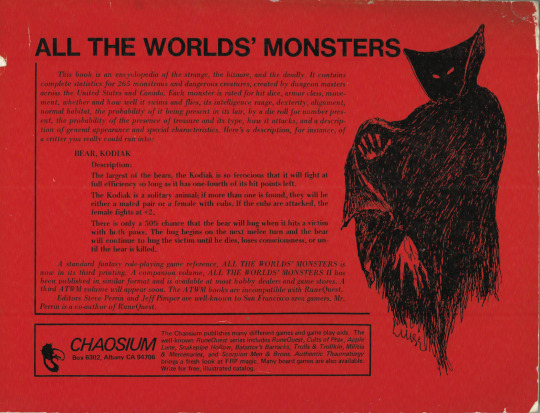
For instance, the description mentions that the kodiak can “fight at full efficiency so long as it has one-fourth of its hit points left.” There were some optional rules in OD&D that included dexterity reductions and various penalties at different percentages of HP loss. Such rules are difficult to implement, particularly at low levels, when a small hit will often take 75% of a PC’s HP, and adds yet another element(or two or three or four) to track. Regardless, people surely used those rules, and I imagine this part of the description was a special ability that applied only to those using these kinds of rules.
A kodiak mother gains bonuses in combat to protect her young and kodiaks have a chance of a hug attack, nothing too noteworthy or mind-blowing.
We end with a note about this being the third printing(it’s what I’ve got), there being another volume out, and a third on the way, and a line about the editors. Steve Perrin is one of them, and the blurb mentions that he’s the “co-author of RuneQuest,” a game I like very much, personally. Then some info about Chaosium and where you can write for info and so on.
The book itself is 109 pages, with the last 3 pages unnumbered, as they are tables, specifically, a monster level chart, to help with placing the monsters found in the book on the appropriate dungeon level, and a table for creating random monsters. Perhaps we’ll roll up a few in a future installment for fun.
The Book’s Introduction Page
Opening the cover we get a title page and introduction. If you thought the sideways book was just a feature of the cover - it’s not. The whole book is like this. And I have to say, I tried to be open minded about it. I told myself “You’re using it the same as you’d use any book except for how it’s turned, it doesn’t actually make any difference.” I hate when something is done in a new way and everyone rejects it because it’s different. While I can see the flaws in it, I really loved the Monstrous Compendium stuff made with hole-punched pages for sorting in a looseleaf binder. I feel like it failed less because of the flaws in it and more because it seemed too different, and was simply dismissed out of hand. So I try really hard not to do that.
But the format really bugs me.
Moving on to the introduction, I have to wonder how close this is to whatever introduction was originally written, since it opens by mentioning that this is the third printing. Mr. Perrin goes on to tell us that it was made for “games such as Dungeons & Dragons, Tunnels & Trolls, and the Arduin Grimoire.”
I have a few comments on this. Originally I wanted to say it was neat how this early one could simply reference D&D like that without a problem, but apparently the book did, in fact, cause a stir with TSR. I have not listened to the linked podcast, but the description says that this was the case. Once this readthrough is complete, I’ll go back and listen to the podcast; I’d like to get my own impressions, and maybe make a few guesses at some things, and see if I’m right or how much my ideas mesh with what they say.
Tunnels & Trolls(another game I quite like) is interesting since it didn’t really have monster stats, so using these in that game would be more for descriptive flavor.
As for the Arduin Grimoire, for those unaware, it was originally written as a sort of expansion and add-on to OD&D. This, too, caused problems, and it eventually became its own game(despite never playing it, its monster the “vampusa” remains a favorite of mine to this day). Gary Gygax mocked it in the form of a cursed item in AD&D, a book that drives the reader insane(one might have assumed it was a Lovecraft inspired item, but its inspiration was pure spite).
It goes on to tell us that they have 50,000 monsters, and how they might not use yours and how they chose the ones that went in here, info about the art, where to mail feedback about the monsters you want to see. What’s of real interest here is the mention that Dave Hargrave and Paul Jaquays gave them permission to use some of their own copywritten monsters, but these had to be removed due to space limitations. They then recommend Mr. Hargrave’s Arduin Grimoire(I’m sure that helped endear them to TSR), among other things, as well as several publications by Jaquays. These were presumably the publications from which the monsters would have been taken, and we’re told they will be in future volumes of AtWM.
Table of Contents
Skimming through, there are some really neat looking ones.
Archer bush? That was a later Mystara monster adapted into 2nd ed and currently 5e(not sure if it was in 3e or 4e or not and don’t particularly care). Sometimes it’s hard to say if multiple people had the same idea or one ripped the other off. Especially in this early time when lots of people were putting out monsters and few had previously, people were bound to have similar if not identical ideas. Such things have happened in much less likely circumstances.
Some very odd ones right off the bat. Snake ape? On the other hand, things like “air squids” are why I read these kinds of collections.
Batarang. Was DC ever notified of this infringement?
Plenty of slimy monsters: blue horror(which I’m guessing is a slime-type?), red blob, maybe “brown ich?,” gelatinous blue horror(maybe the original isn’t a slime after all), green slime golem. Eh, maybe not as many as I thought. We’ll get a better idea as we read through them, I don’t want to spend all day browsing the contents. And neither do you, I’m sure!
Vampire bear. Heh. Brain stealer(geteit chemosit). Is that German? I feel like I’ve seen other monsters in here with similar names. Will have to see if that’s true and if they’re written by the same author.
Carnivorous… typo? Carnivorous typo. Typo, carnivorous. Are you serious? If this doesn’t end up being some kind of meta monster I’m going to be quite disappointed.
Here’s another thing about the formatting. It makes sense as a normal book, in that one column continues in the column to its right. But because of the formatting of the book, you expect it to continue down the column on the next page below it. It’s a small thing, honestly, but it’s noticeable.
A lot of monsters that would see official stats later, as expected. Crocotta, cyclops, various demons - but no devils! There’s a “sun devil,” but since there’s no “devil” category I figure it’s a devil in the way a tasmanian devil is a devil - in a non-literal sense. It looks like there are some traditional powerful monsters from myth and legend among the demons, as Ymir(“Prince of Ice Demons”) is one of them, and some of these others may turn out to be similar things - it’s hard to tell from the names, such as “serpent king” and “twelfth plane,” which yes, is the name of a demon. As three demons are listed as “ice,” I imagine they were going more for a frozen Hell as opposed to a fiery one, which would be why they used Ymir instead of Surtr. The latter would have been a much more obvious choice, being a fiery giant who is to burn the universe to ashes as the grand finale of the final conflict between good and evil(yes I’m simplifying it, this isn’t a mythology lesson).
A good number of golems, including diamond, dust, the aforementioned green slime, ice(unusual but not impossible in a magical world, or in frozen places, where they’d be quite evocative), quicksilver(which would also appear in Mystara as simply “silver golems”), wood(ditto), and oddest of all - tar.
Ground octopus, like “air squid,” is the kind of thing I read these books for. Again, there’s kind of a similar monster in Mystara, the decapus, which tends to live in trees. Personally, my favorites are the octorocks of the Legend of Zelda series. While mentioning both air squids and video games, I’ll throw in that the Japanese Super Mario Bros 2 featured flying squids as well. I should also mention that I haven’t played video games in 30 years, so I will routinely recall things like this and not the 3,000 instances of them that have likely appeared in video games in the interim.
I never thought I’d see triffids in a monster book. I love it! Some Lewis Carrol monsters, some from myth and legend, such as the “three sons of Argatron.” I had to look that up, by the way, as it sounded historical but I wasn’t sure. Google corrected me to some random other word first, and then when I insisted that it search for what I actually typed, it pulled the legends right up. I didn’t read them though; we’ll do that when we get to the entry! Man-Scorpion, another monster not yet statted. As far as I know, they’re usually called “scorpion men,” so the formatting of “man” first is an unusual coincidence and I wonder if there was some famous or classical text popular at the time that used that form. At any rate, it says “see Humbaba,” who, if I’m not terribly wrong, was not a scorpion man.
There are several Lovecraftian things, including stats for Nyarlathotep. I believe I have probably 3 or 4 sets of stats for him, for various editions of D&D, and I look forward to contrasting them all and seeing how they compare, especially this earliest one to, say, the newest one I have. Of course, being published by Chaosium, they had the rights to these monsters.
Not so much the olog-hai, which was a direct property of the Tolkien Estate. If “hobbit,” a word Professor Tolkien did not even invent, had to be removed from early versions of D&D, one must imagine that the only reason the same didn’t occur here is that this book flew under their radar. (In fact, I believe hobbits were removed by choice, in order to prevent future legal issues, but this is another point I could be quite wrong on.)
Let’s move on and not spend all day speculating and rambling about a table of contents, shall we?
Creators
I don’t want to add up the number of creators used, as many are combinations of creators and so forth. Dan Pierson created the largest number of monsters, with 28 entries printed in the book. It seems like the average is about a dozen or a bit less, just glancing at the numbers and guessing. If someone cares enough to do the math, have fun.
One little point is the last line: “There are 265 entries and 113 cross-references.” So out of these monsters, almost half of them are related to(in some way or another, whether as biologically related, as enemies, or whatever) others. If that’s what it means, that would make some sense given that some creators contributed a dozen or more monsters, and there’s often going to be such connections(such as someone creating a number of “ice demons”). This kind of thing is good, as it can be incorporated to give the denizens of your world, and your world by extension, more of a feeling of depth and history, that these monsters have relations, alliances and rivalries, and aren’t just a set of numbers.
“Interpreting the Monster Entries”
An explanation of what the stats mean and so forth. There are a few points of interest here. They mention that random numbers are “expressed as die rolls,” in case you played D&D and somehow didn’t know what 3d6 meant. This is great though, as it saves the trouble of figuring out what to use to determine 3-6(it’s 1d4+2). There are reasons that Gygax chose to express numbers as, say, the aforementioned 3-6 instead of 1d4+2, which was to emphasize that the numbers were important and not how they were generated, opening people up to new dice rolling conventions and so forth. Unfortunately, what it mostly did was confuse people with some of the more difficult to interpret number ranges.
We’re told that intelligence is abbreviated as IQ(as it is in the later GURPS) and expressed as a die roll - so instead of being told “very” or given a specific number, we’re given dice to roll to determine the intelligence of any given monster. (I do this in my own games and monster stats, so it’s nice to see someone else doing this a number of years before I was capable of playing.)
Most of the rest of the explanations are mundane and not worth reviewing, it’s basic information.
One thing it doesn’t bother to explain or mention is the fact that it has a dexterity range for each monster in the same way it has an IQ range. Here, dexterity is abbreviated DEXT., which makes me wonder if the DEX abbreviation had been used yet on character sheets or was still a little bit away? Remember, this book was released after Holmes Basic and before a single AD&D book, including the first AD&D book released, the Monster Manual.
More importantly than the abbreviation is why that was there. It was there because in Holmes Basic, the melee combatants attack in order of dexterity, regardless of who won initiative or initiated combat. The Holmes book mentions the question of “who strikes the first blow?” as one unresolved in OD&D, which seems very odd. OD&D never really explained initiative at all, and expected you to default to Chainmail order of initiative. It may have not expected you to use the combat “phases,” but just the die mechanic that determined which side acted first - that being a d6 and the higher goes first. Later versions would have the lower roll act first, with the option to positively/detrimentally modify the roll by weapon speed. There is mention that dexterity might affect various things including initiative, but there’s no exact rule explaining how. Most people just assumed that the one with the initiative attacked first, and this was how the game has been played, for the most part, ever since(and I imagine, for most, during and before, as well). Personally, I think it’s great, and would enjoy trying the rule out. I favor using phases and aspects of combat that add some amount of strategy, where “I run up and attack” can often be detrimental to waiting for a more opportune moment and so forth. I’d prefer the combat phases, and have played with them for many, many years, but I’d be quite open to the Holmes Basic version of combat. (Someone want to run it for me?)
As yet another digression, it’s funny how often I’ve played games with people that ran their system of choice for decades, sometimes since the game was released, and never knew how initiative actually worked in said system. People get so used to it working a certain way in lots of games, and they either never consult the rule in their own game, or forget it and replace it in their mind with another. I’ve played in multiple Marvel Super Heroes games where everyone rolled a d10 for initiative, and when I pointed out it was one die per side, the judges in each case looked at me quizzically and then continued doing it how they had been doing it forever. The fact that they had been performing the most basic part of their favorite game wrong for 30+ years was too much to consider so it was simply dismissed.
And with that, I’ll wrap this first entry. I hope it wasn’t too boring - I know I ramble and digress, but it’s kind of part of the point I suppose. I hope you’ll stick with me for the monsters, even if you found this part kind of weak, and that you’ll let me know what you think, as well, because I want to go over this with you, not just read a review to a brick wall. It’s not a review, it’s a readthrough, me and you, if you please.
So.
Let’s read All the World’s Monsters together!
#D&D#AD&D#tunnels and trolls#arduin grimoire#chaosium#OD&D#holmes basic#holmes blue book#monster manual#all the world's monsters#readthrough#read through#review#osr#rpg#rpgs
1 note
·
View note
Text
if there's one thing about classic literary detectives it's that they are not conventionally attractive. doyle told sidney paget to stop drawing holmes so pretty. christie was like "let me introduce you to this short pudgy balding man who is retirement age and i hate him." sayers compares wimsey to maggots on literally the FIRST PAGE
i love it. i love them. stop casting hot people in these roles. we need our detectives to be Charmingly Weird-Looking
#red randomness#acd holmes#poirot#lord peter wimsey#sherlock holmes#hercule poirot#peter wimsey#100 and up neat#the contrast in resulting authorial attitudes also ends up being somewhat amusing#christie basically wanting to kill poirot but going 'i gotta give the people their pompous little guy. and also it's money.'#doyle constantly wishing people would read his other worse books#and then sayers comes in like 'hey remember the guy i kept comparing to a slug? yeah i'm marrying him to my self-insert'
2K notes
·
View notes
Text
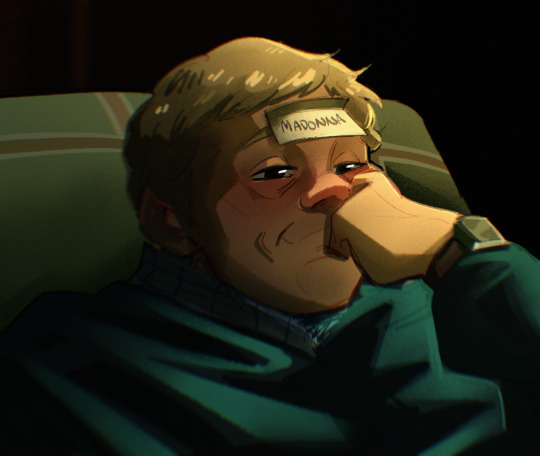
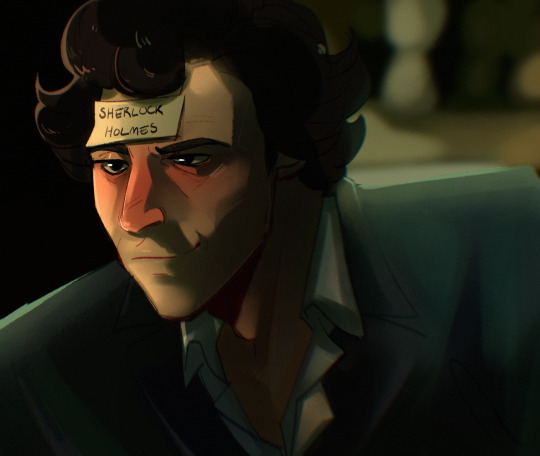
Stag night
#:)#that was very funny#… tank yew :)#maybe I’m basic - but this scene slaps I love it#always got me giggling and kicking my feet#my art#sherlock holmes#john watson#johnlock#bbc sherlock#sherlock
407 notes
·
View notes
Text
sherliam nyc life art dump 2023 (not including arts that already had separate posts in my blog) (unless i forgor)
warning long post

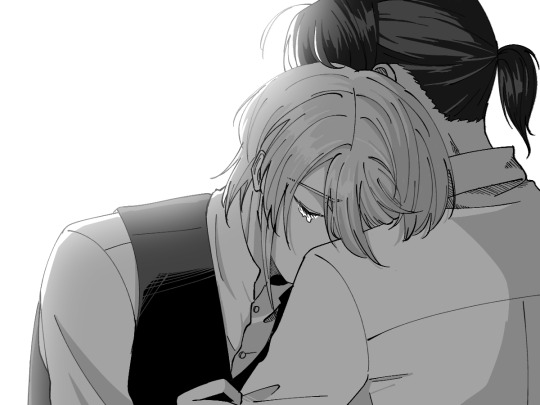


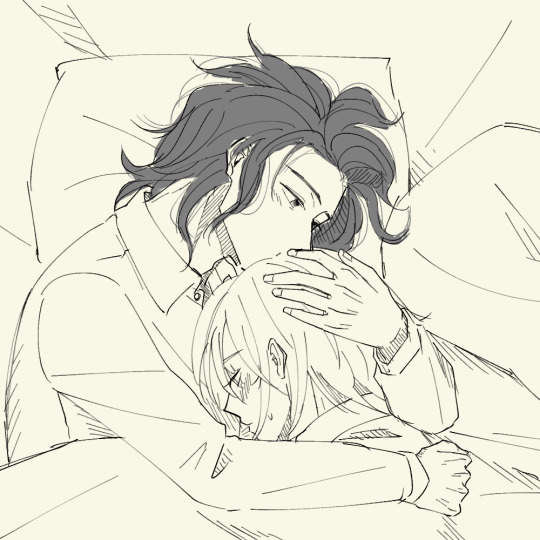
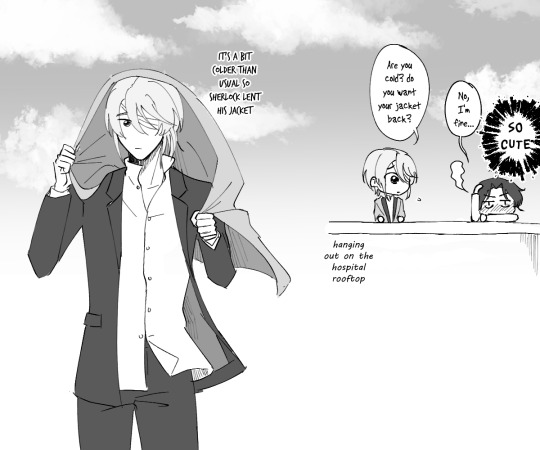
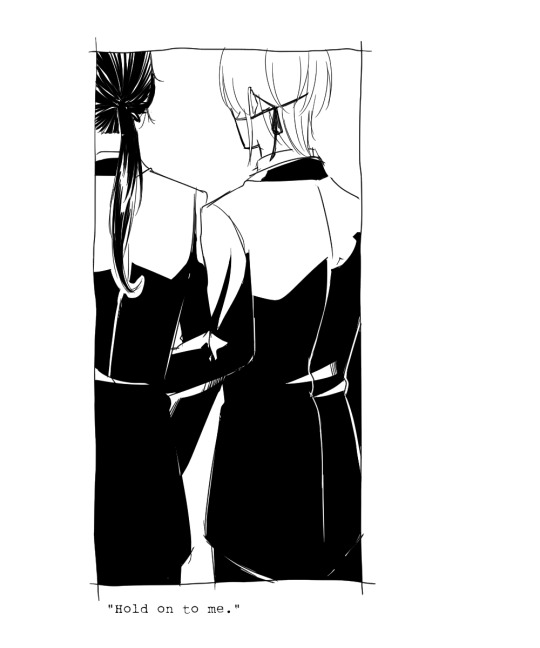

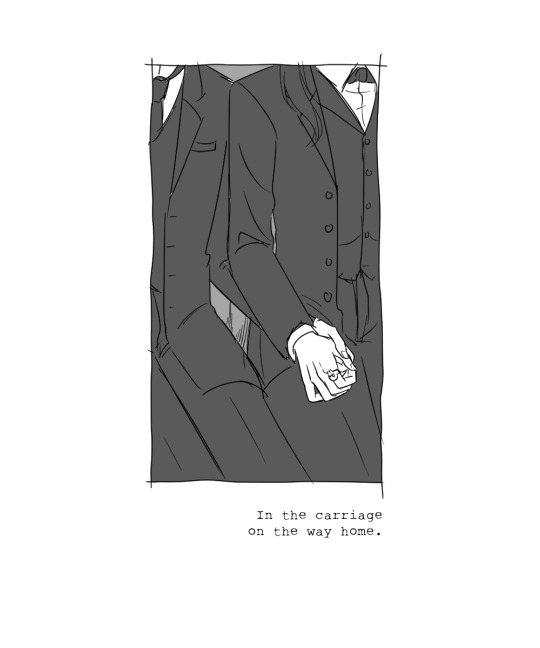


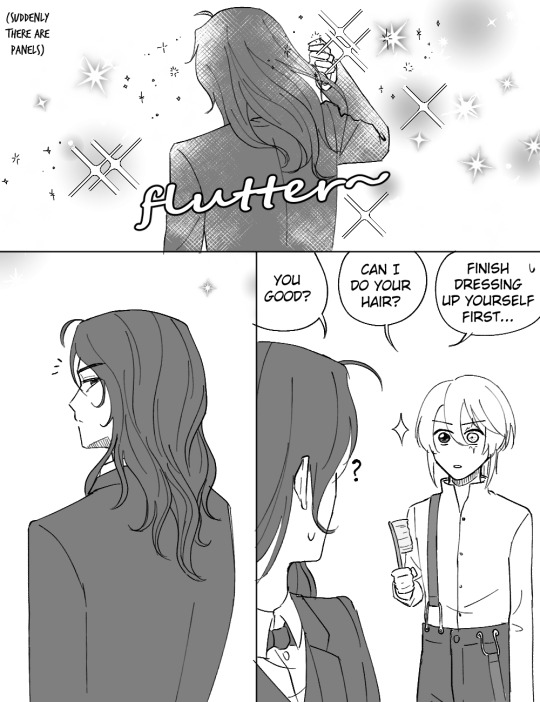
(↑ something super specific about sherlock's hair that i think of often)
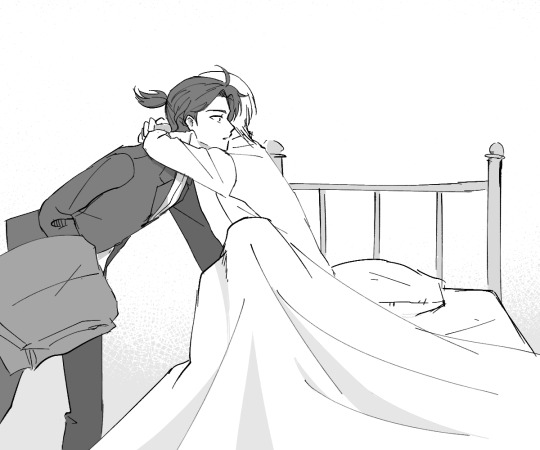

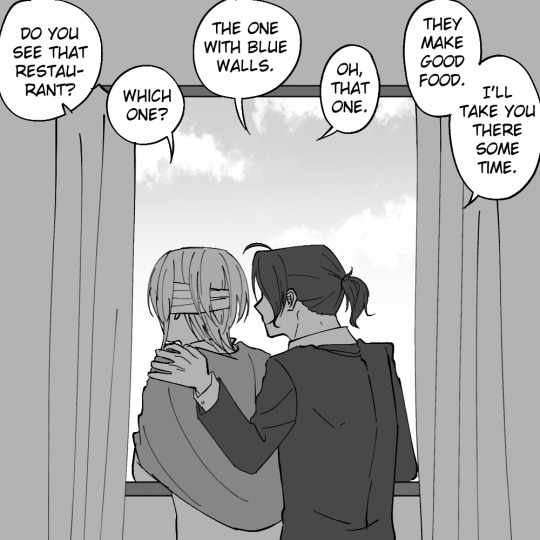

(↓ 3 drawings below are connected story-wise)
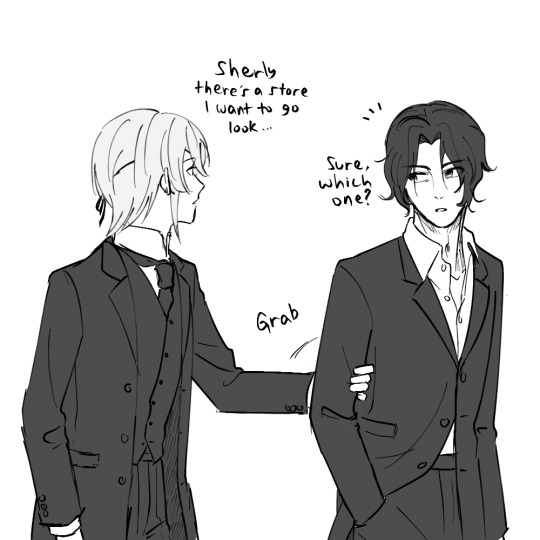



(↓ morning routine for some reason)


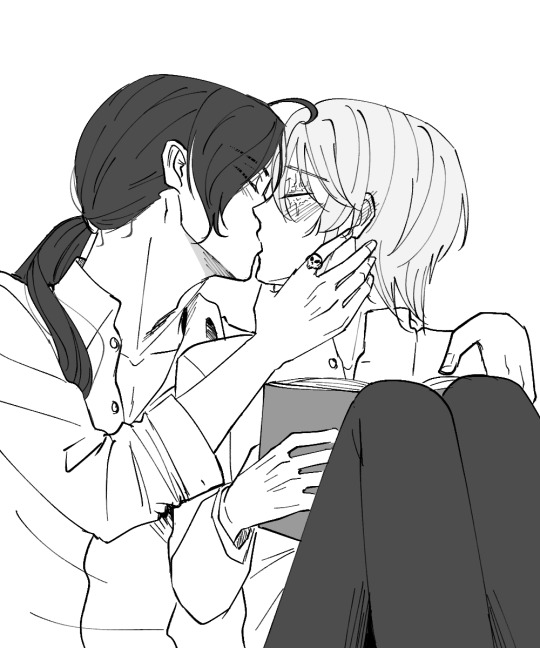

(↑ based on this merch)
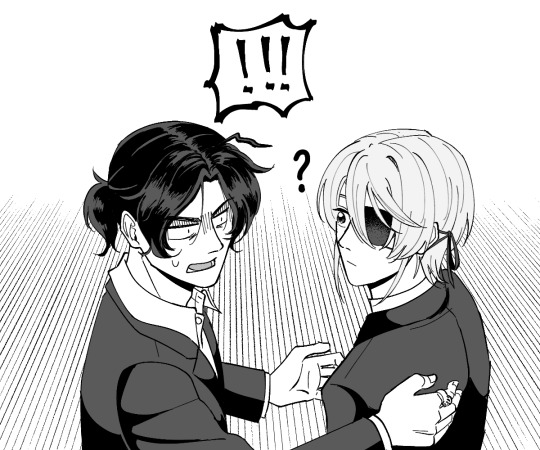

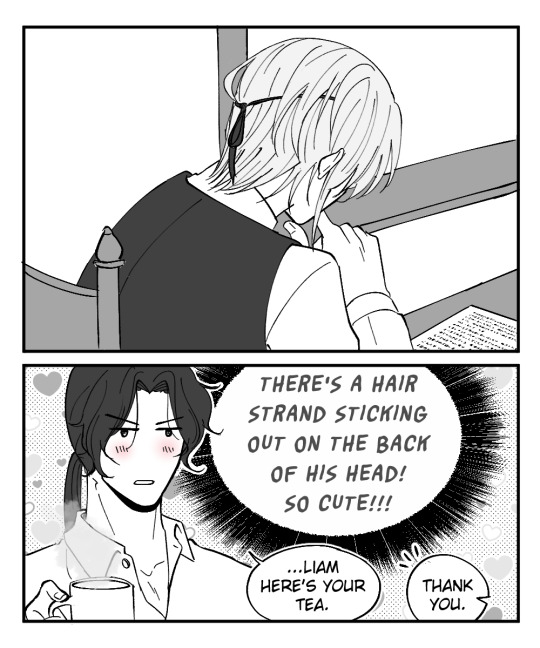
(↑ they're both the same)

i ended up not drawing as much as i did last year and i failed to be active here again (haha) but nevertheless thank you for your support in 2023 as well :) happy new year, i hope everyone is healthy and happy always
#sherliam#william james moriarty#sherlock holmes#moriarty the patriot#yuukoku no moriarty#yuumori#my art#by the way the drawings are in chronological order#as in first drawing is from january#and the last one is from december#(because i save my art files chronologically like that as well)#i actually just wanted the post to be just images but#there were some that needed more context#so i basically added explanations#which were just... how i captioned it on twitter#(cause i'm lazy)#do people read these tags? thank you if you're reading until here
694 notes
·
View notes
Text
john getting sherlock ear defenders that are personalized, both with sherlock’s initials and john being quick to point out the pun it makes is something that can be so so important to me, actually. john is so unbelievably sweet, understanding, and accommodating it’s absolutely wonderful to see. i love this podcast ❤️❤️❤️❤️
#sherlock and co#sherlock & co#sherlock holmes#john watson#dr john watson#johnlock#the blue carbuncle#the blue carbuncle part 2#the blue carbuncle pt 2#PLS IT WAS SO SWEET I CRIED#I BASICALLY PREDICTED IT I WAS LIKE ’what if john just bought him new ear defenders what then’#PRECIOUS PRECIOUS BOYS#SHERLOCK WAS SO HAPPY#G O D 163948/10 EPISODE
345 notes
·
View notes
Text
John: Why does everyone keep assuming we’re a couple?
Sherlock: *Sitting in John’s lap, playing with their hair*
Sherlock: Beats me.
Credit to @write-it-motherfuckers
#basically the whole show#incorrect quotes#sherlock holmes#bbc sherlock#john watson#incorrect sherlock quotes#johnlock incorrect quotes#johnlock#john h watson#dr watson#john x sherlock
82 notes
·
View notes
Text
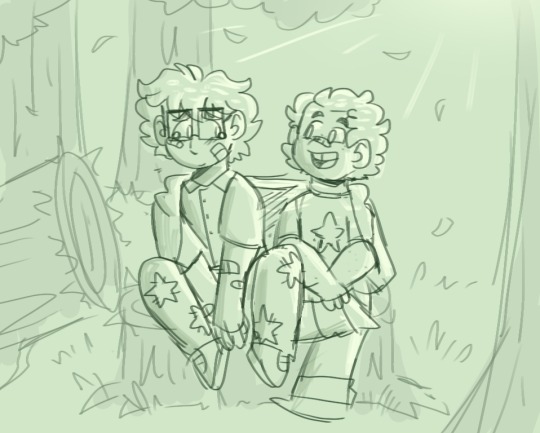
i can tell that we are gonna be friends.
#this is part of the au that me and my friend lost have been making :) basically where john and sherlock were childhood friends#we called it podkids and co#podkids and co#sherlock and co#kidlock#sherlock holmes#john watson#jonklock#johnlock#jonk watson#fanart#art#au
45 notes
·
View notes
Text
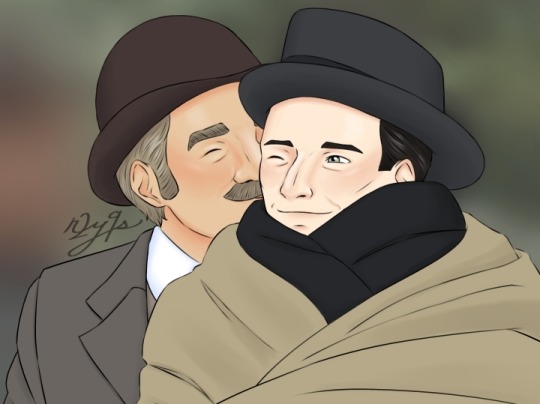
[sherlock holmes]
what if watson gave holmes a little kiss while on the drive to visit mr musgrave
#sherlock holmes#johnlock#acd johnlock#granada holmes#john watson#holmeswatson#welcome to the start of a series of pieces that i'm going to call#it's basically the canon stories except holmes and watson kiss a whole lot more#musgrave ritual#musg#acd sherlock holmes
227 notes
·
View notes
Text
"Loki x Mobius is so Johnlock coded-"
It's not. Wanna know why?
Because Mobius is this guy:

I will not elaborate
#Put any of this mans quotes in Mobius mouth#It'll sound absolutely natural#They're basically variants#loki series#loki#lokius#mobius#mobius m mobius#loki laufeyson#loki x mobius#john watson#sherlock holmes#bbc sherlock#johnlock#john x sherlock#superwholock
85 notes
·
View notes
Text


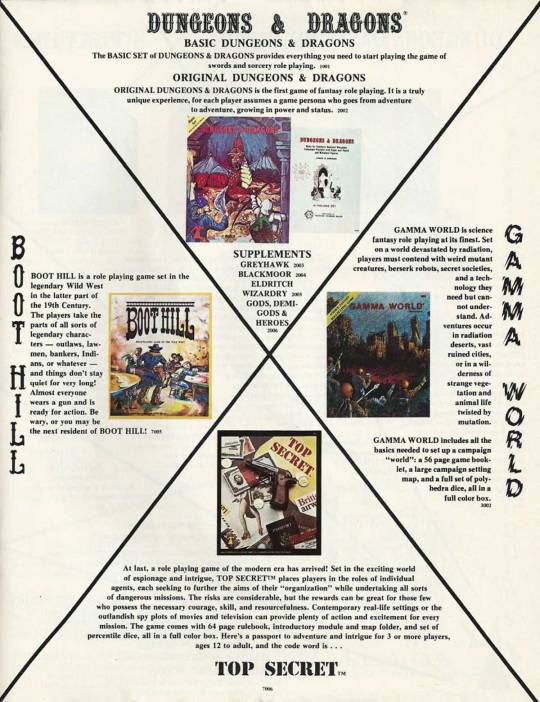



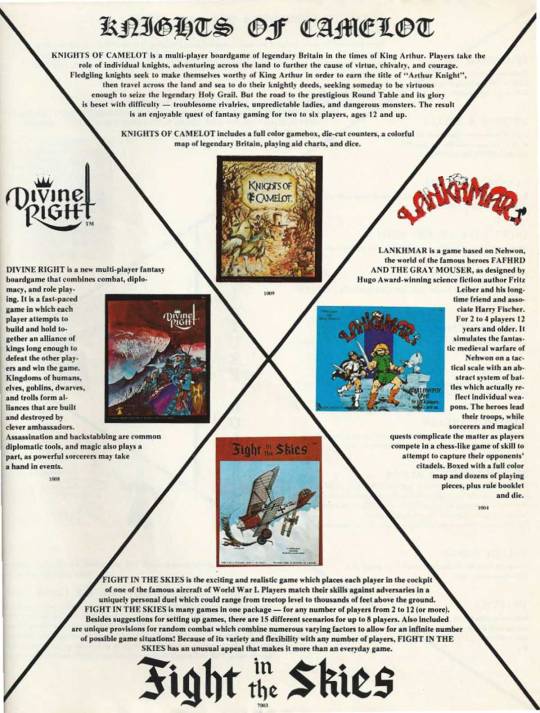
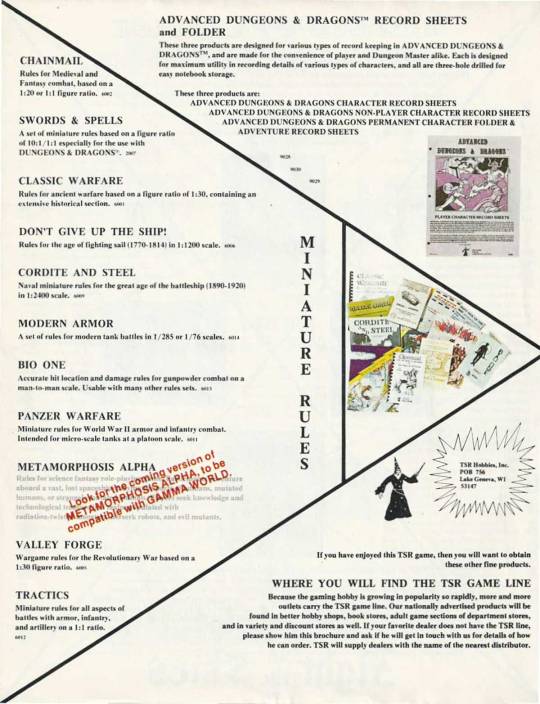
TSR Hobbies "Gateway to Adventure" catalog -- This version was included in TSR's boxed games ca 1980. Inside are many well-loved classics, some rarities, and probably the final appearance of many of their historical miniature wargame rules. The original D&D box set of 3 little books was still offered for sale, now in a white box marked "Original Collector's Edition," because it continued to sell and make TSR money even alongside Holmes' Basic set and the hardcover AD&D books. The last page teased an update to Metamorphosis Alpha to make it compatible with Gamma World (oddly listed in the "Miniature Rules" section), but that version never was published.
#D&D#Dungeons & Dragons#dnd#gaming history#Metamorphosis Alpha#Gateway to Adventure#game ad#dungeon door#demon#The Game Wizards#Dungeons and Dragons#OD&D#Basic D&D#Holmes Basic#Holmes D&D#AD&D#TSR#TSR Hobbies#TSR Hobbies Inc
146 notes
·
View notes
Photo
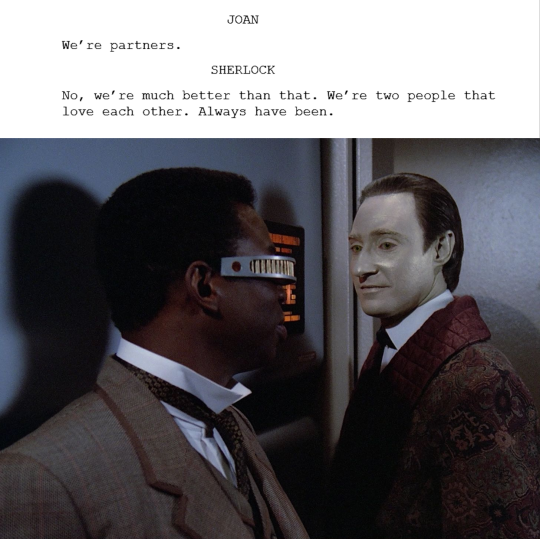




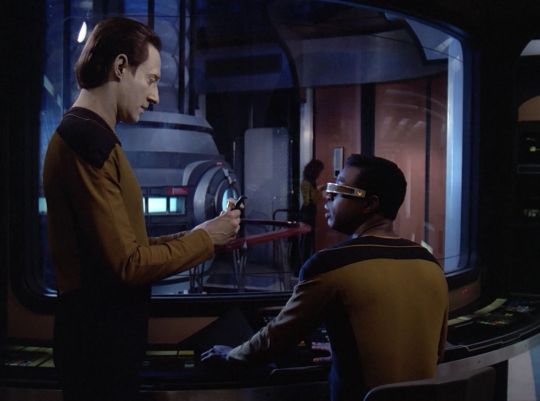
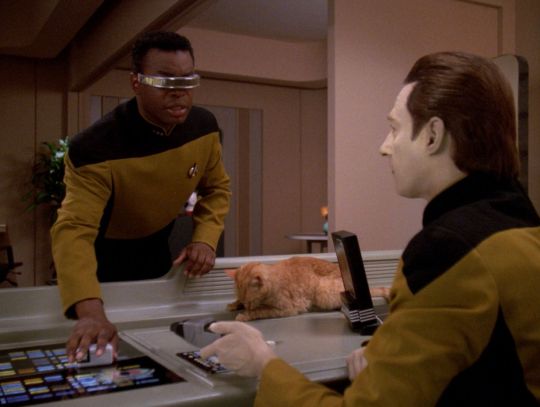



Elementary, 6x21: “Whatever Remains, However Improbable” // Louise Glück, Crossroads // Elizabeth Gilbert, "Committed: A Skeptic Makes Peace with Marriage" // Mary Oliver, West Wind // Death Note: the Musical, "When Love Comes"
#daforge#dataforge#geordi la forge#data soong#data tng#geordi laforge#star trek next generation#webweaving#or basically webweaving#this couldve all just been joan and sherlock and geordi and data parallels#so many of their moments work so perfectly for daforge#on top of being holmes and watson!!!#anyway the amount of emotion data shows whenever he looks at geordi is OVERWHELMING that's LOVE!!!!
274 notes
·
View notes
Text
What if after the Reichenbach Falls in their grief and mourning John and Mariana kind of get together?
There's no company anymore not when Sherlock's absence has left such a vast hole, not when John can't even log onto Spotify without crying looking at all the cases they went on and not when Mariana can barely pick up client's phone calls without feeling sick.
So there's no inappropriate workplace romance happening cause there isn't even a workplace anymore.
Mariana and John don't talk about Sherlock much, it's too painful and they certainly won't speak about their own personal feelings about him either, why would it matter anyways? He's dead.
They don't talk about it. They don't talk about how they still buy and stock up on Sherlock's pasta sauce when they go grocery shopping. They don't talk about Sherlock's room, about it being empty, about cleaning it out, about the fact that the man that occupied it would never come back. They don't talk about his last chemical experiment and equipment still on the kitchen table, untouched and unfinished. They don't talk about it. They just don't. Not even months after he's gone and won't. Ever.
Then the impossible happens, Sherlock comes back from death just casually strolling in to surprise them both. And afterwards Mariana has to help John after he fainted and then Sherlock after John punches him.
And John and Mariana are so full of happiness and relief! The three share kisses and hugs. But...what now though? They go from struggling with his lack of presence, the new routine of just the two of them and mourning Sherlock's death to now having not only him back but their routine and business.
And with everything seemingly being back to what it felt like, the want of what once was comes crashing down - Mariana and John break up to go back to a time before Sherlock's death, even though Sherlock doesn't agree (he just finds out) and tells them that they can only go forward.
Cue the angst of Mariana and John's breakup, John's unresolved feelings for Sherlock that he now has a chance to resolve, Mariana's lingering feelings for John and new found ones for Sherlock, Sherlock confronting his own feelings of jealousy and confusion towards Mariana and John starting a relationship when he was gone (and without him? If he didn't 'die' would they have asked him into the relationship? What about now? He wanted them both but did both want him? What does want even mean?? Does he want a platonic or romantic relationship with them? What even is the difference? And etc etc etc).
And then they got together somehow and all retired on a bee farm where Mariana sells their honey at the local farmers market, Sherlock tends to the bees and John is just a house hubby.
#i may just start to learn how to write and publish this as a fanfic cause now im lost in my own sauce tf#i was just going to ask what if mariana and john got together after TFP but then spiralled tf out of control. anyways let me know ur thought#its 1am and i got work early tmr. today* so if it didnt make sense my bad - i need to log off 💀#sherlock & co#sherlock and co#sherlock#sherlock holmes#john watson#mariana ametxazurra#goalhanger podcasts#johnlock#fanfic#basically#writing
45 notes
·
View notes
Text
Man I really hate the idea that Holmes’ Sussex housekeeper was Mrs. Hudson. I’m sure she has better things to do than follow Sherlock Holmes around and take care of him for the rest of her life. She deserves a nice retirement ffs.
#Let Her Rest#sherlock holmes#acd holmes#mrs hudson#the idea of mrs hudson as ‘Martha’ is kind of silly#and it bugs me a little the way some people treat it as basically canon#but it doesn’t annoy me in the same way#since it does give her a more active role
50 notes
·
View notes
Note
Happy Easter, sweetie! ^^
Thank you. I wish you all a joyous Easter, as well as a merry spring equinox and a nice feast of the goddess Eostre.

#and basically merry any other thing you celebrate today#roleplay#rp#sherlock roleplay#sherlock rp#sherlock#bbc sherlock#sherlock holmes#sherlock holmes rp#sherlock holmes roleplay#easter#happy easter#spring equinox#vernal equinox#easter 2024#cake#food#egg#bunny#pink#pink aesthetic#pastel#pastel aesthetic#pastelcore#fruit#sherlock replies#sherlock holmes replies#johnlock roleplay#johnlock rp#flowers
41 notes
·
View notes